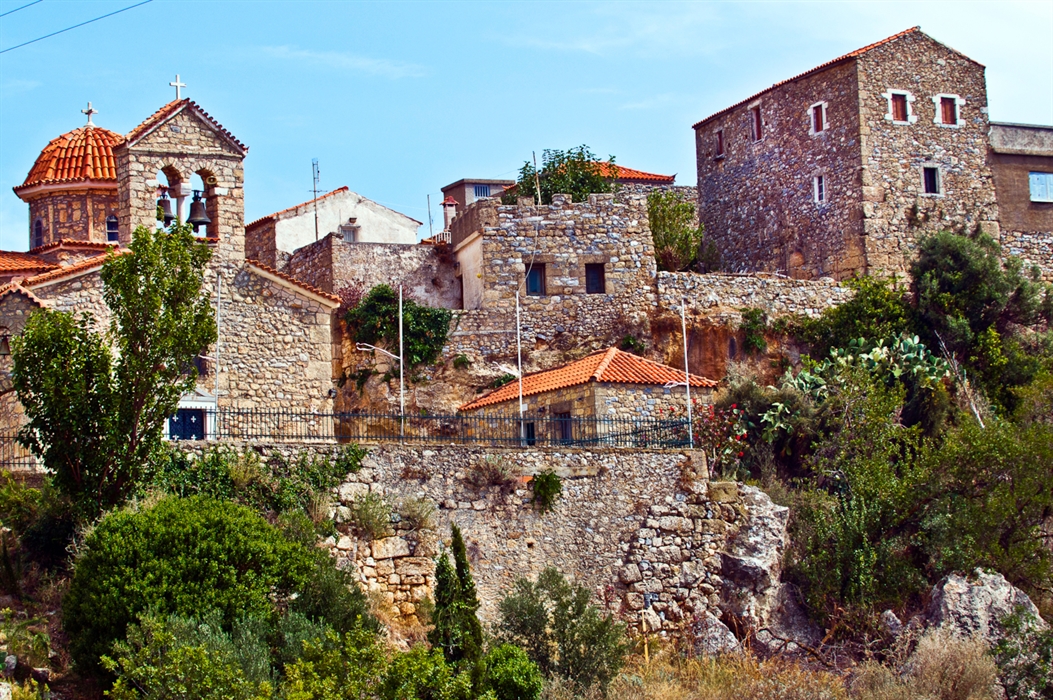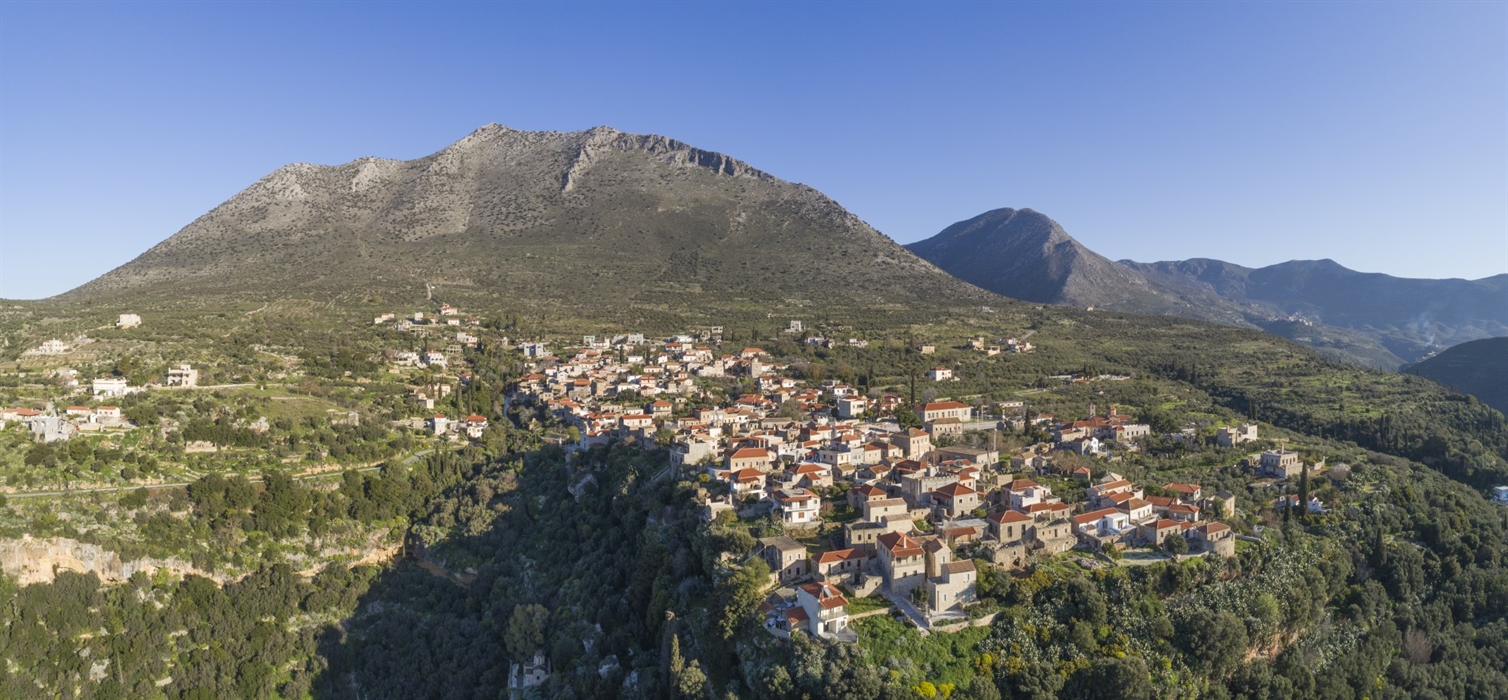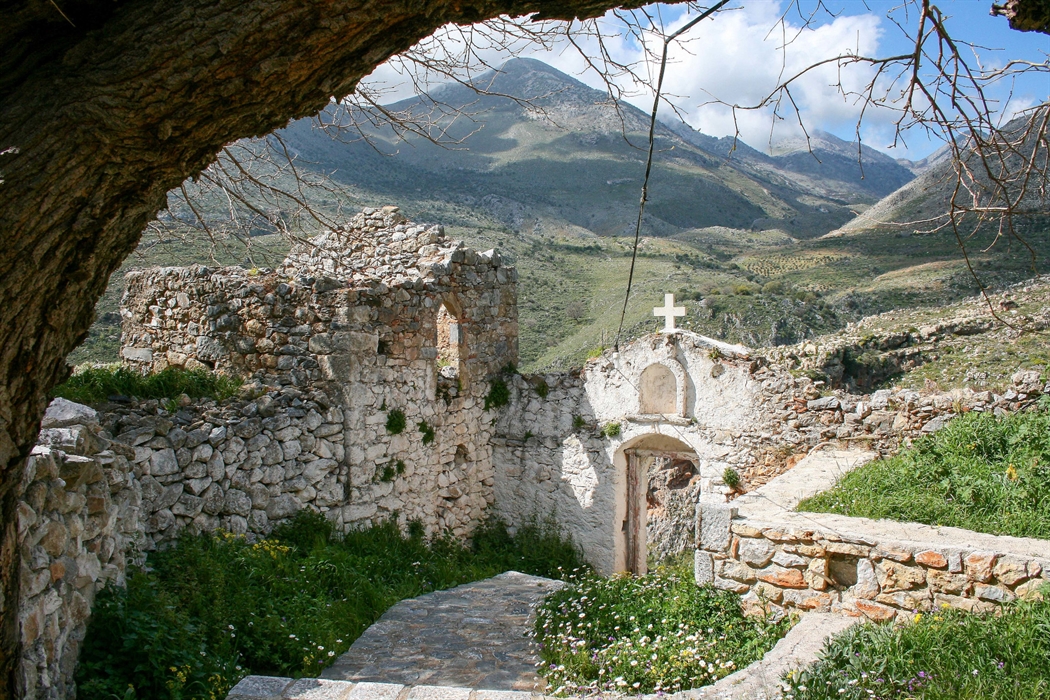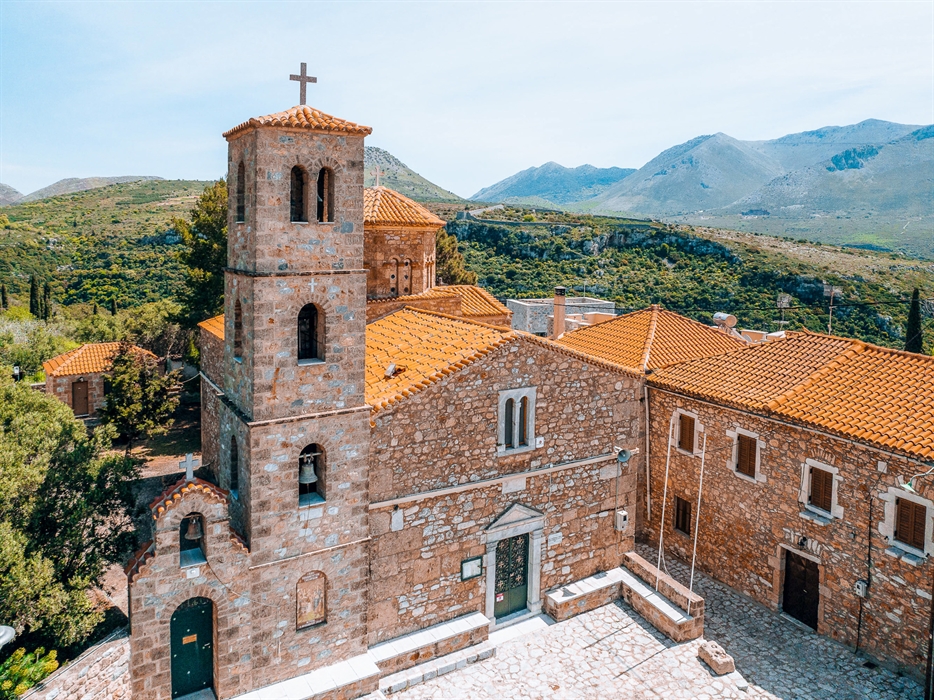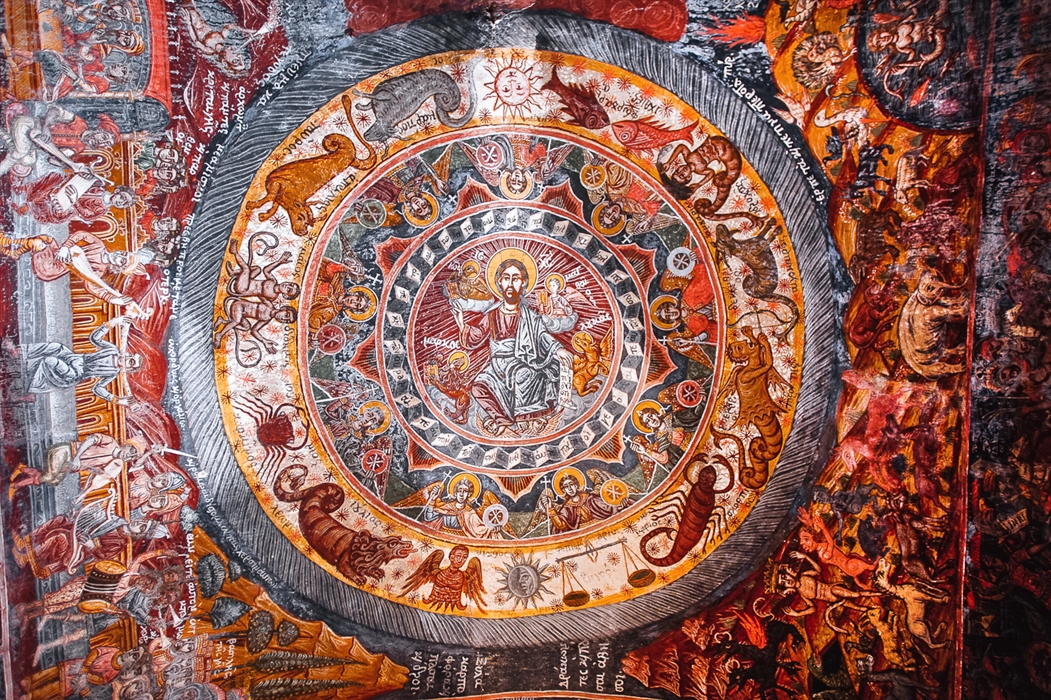Oitylo and Neo Oitylo
Oitylo is two for the price of one! Oitylo itself is a traditional Maniot mountain village perched on the edge of a gorge and looking across to the ruined castle of Kelefa. Neo Oitylo is just a couple of kilometres away at the bottom of the hill, and is a seaside village with a good beach, crystal clear blue-green waters and great tavernas with fresh fish and seafood.
Oitylo in Inner Mani is one of those villages that almost seems to encapsulate a whole region. There’s a great variety of traditional stone buildings, including the tower houses that are so characteristic of the Mani. And of course, there’s also a ruined castle nearby, Kelafa is just over the gorge. Then for a view that’s hard to beat, head to the pretty Koimisi tis Thetoko church where you can gaze out over the ravine and down towards the endless blue sea. The church is just off a small picturesque square with a couple of cafes, so why not have a seat and relax with a coffee too?
There’s also a fair bit of history connected to the village. It’s built on the site of an Mycenaean citadel which was called Oetylus. Homer tells us it was named after the mythical hero Oitylos, and that the city sent ships to fight in the Trojan War. Homer wasn’t the only famous writer to mention the village - it was given its local name Vitlyo in Jules Verne's “The Archipelago on Fire” and was the home of fictional pirate hero Starcos. This wasn’t too far from the truth as the village was indeed a stronghold for pirates at some points in its history. And as if pirates and the Trojan war weren’t enough, there are also historical finds such as the temple dedicated to the Egyptian god Serapis, which leads archaeologists to believe that ancient Oetylus traded with Egypt. Finally, the village is also responsible for the Maniot names, street names and churches that you can still find in Corsica today as the influential Stefanopoulos family which moved to Corsica originated from here.
Just before you go into Oitylo, there is a narrow road that will bring you to the 16th century Dekoulou monastery which has traditional folk art frescos by the Maniot painter, Antonis Dimangelos
Neo Oitylo (Tsippa) and Karavostasi Beach. Neo Oitylo is down by the sea. Its colourful fishing boats, long beach at Karavostasi, turquoise sea and clusters of traditional stone houses built close to the shore make it a good place to take a break and go for a wander and a swim. And afterwards there is a good selection of tavernas where you can try fresh fish and seafood and wine.
At the entrance to the bay of Oitylo, at Kalamakia, there is a cave which dates back to the Palaeolithic era.
Did you know that
Novibet Oceanman Greece has organised official open water swimming competitions at Oitylo for the last five years. This has highlighted the village and the Mani in general as a popular sports destination and given thousands of male and female swimmers the chance to compete here in spectacular settings.
Location
Find the destination on the interactive map below.
Categories
Weather
Σχετικό περιεχόμενο χρηστών (UGC)
Ενημερωθείτε για ενδιαφέροντα θέματα γύρω από τον προορισμό μέσα από το περιεχόμενο των χρηστών μας
Discover 7 hidden gems of the Peloponnese
Many of you may have already visited some of the most renowned attractions…
TOP 10 archaeological museums in the Peloponnese
Olympia, Mycenae, Epidaurus, Diros Cave, Ancient Corinth, Messene and…
TOP 10 Castles in the Peloponnese
Castles galore! Mystras, Monemvasia, Palamidi, Methoni, Koroni,…
Newsletters
- About us
- FAQ's
- Map
- Tourism information centers
- Disclaimer
- Sitemap
- Our brand
- Media roum
- Adding your bussiness
- Corporate
- MICE

Peloponnese. Greece beyond the obvious





Design and creation from Cosmote
Marinas and Moorings
Diving centers
Get inspired
- Media gallery
- Blog
- The Peloponnese in the media
- Your feedback
- Users' general content
- Users' local products
- Users' events content
- Ask a local
More
- Accommodation
- Travel agencies
- Restaurants
- Services
- Destinations Map
- Weather
- Public transport
- Events
- Frequently asked questions
- Useful phones
- B2B
- Destination Data
- Contact


